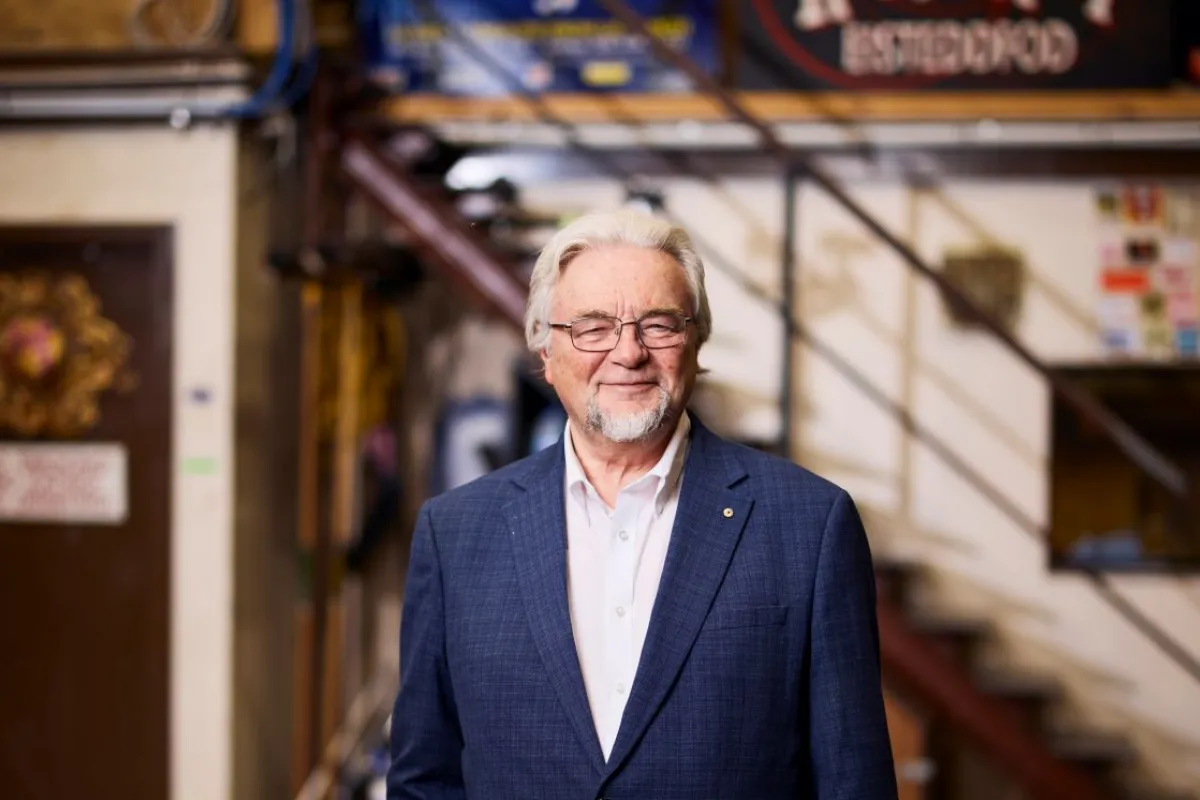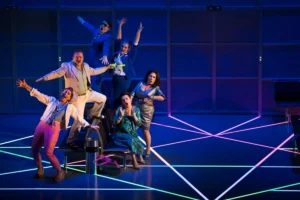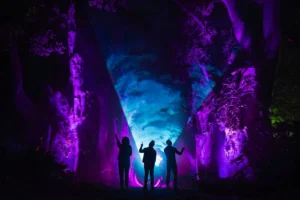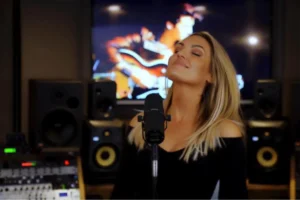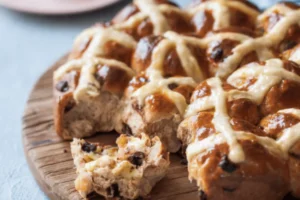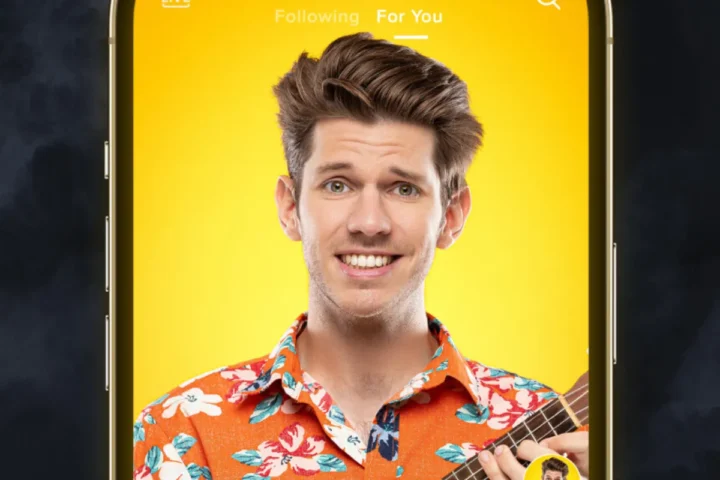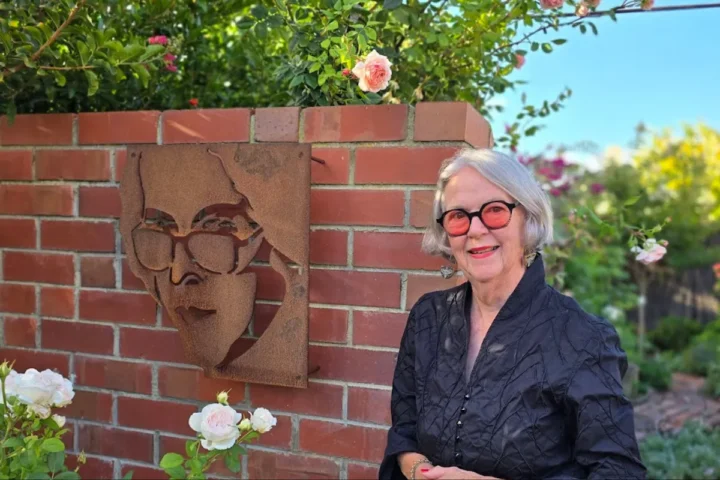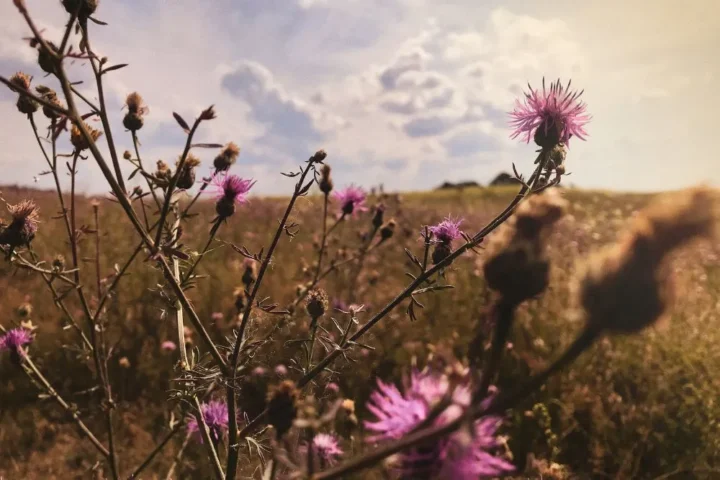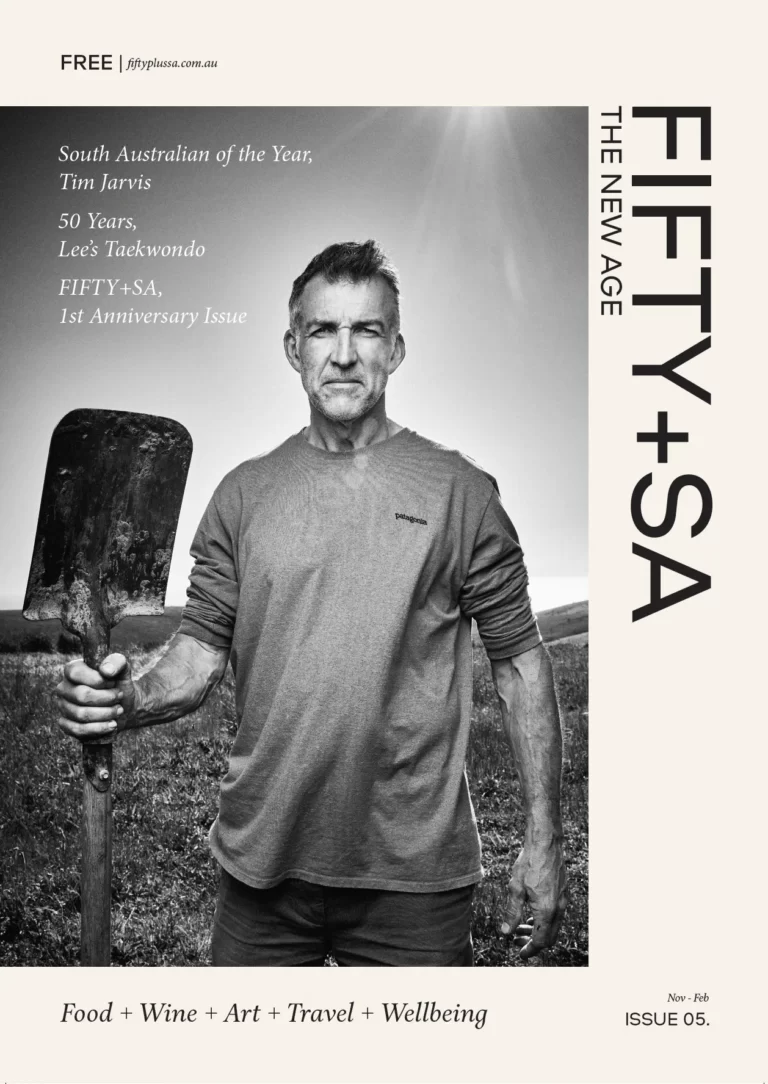Interview by Olivia Williams
Under his guidance, the Centre has become a vital creative hub within the Asia-Pacific region, contributing to Adelaide’s cultural landscape and earning global recognition.
From pioneering festivals like OzAsia Festival and Adelaide Guitar Festival to overseeing major renovations such as the revitalisation of Her Majesty’s Theatre, Gautier has played a pivotal role in shaping the Centre’s legacy.
We sat down with Gautier to reflect on his achievements, the lasting impact of the Centre’s programming, and the future of Adelaide’s arts community.
After almost 19 years at the helm of Adelaide Festival Centre, what are you most proud of achieving during your tenure?
Well, I think Adelaide Festival Centre is now recognised as one of the most important creative hubs in the Asia Pacific region. We have that respect because of what we do – we have five festivals that are very much to do with contemporary Australia. We have put together international intern programs and the Arts Leadership program, which have really made their mark across the region. I think our communities value what we do – they’re proud of Adelaide Festival Centre and Her Majesty’s Theatre.
The Maj has been a very important achievement, it took ten years to do but it is now probably one of the most loved and important theatres in the country.
It just shows what we can do when our creative team puts its mind to it, we can create things that are world class. I’m really proud of the organisation for this success.
Celebrating 50 years of Adelaide Festival Centre was a milestone moment. What has been the economic and cultural impact of this landmark anniversary?
We were the first capital city arts centre in the country and that is a badge of honour. We might not be the biggest, but we can certainly be the most ambitious and the most innovative. A good example of that is OzAsia Festival, it attracted 220,000 people in 2024 and is regarded as the premier Asian Australian cultural engagement event in the country.
You can see in terms of number of attendances and the economic impact that the centre has. When you think about it from a precinct point of view, this facility here in the middle of the precinct (which attracts 5.5 million people a year), we are at the heart of that.
Across in Chinatown, you can see the huge investment there, and the Maj is an anchor attraction right in the middle of that. They’re the buildings, but it’s important always that you bring the buildings to life with great programming. That’s why our maxim, ‘program led’, has been central to our success.
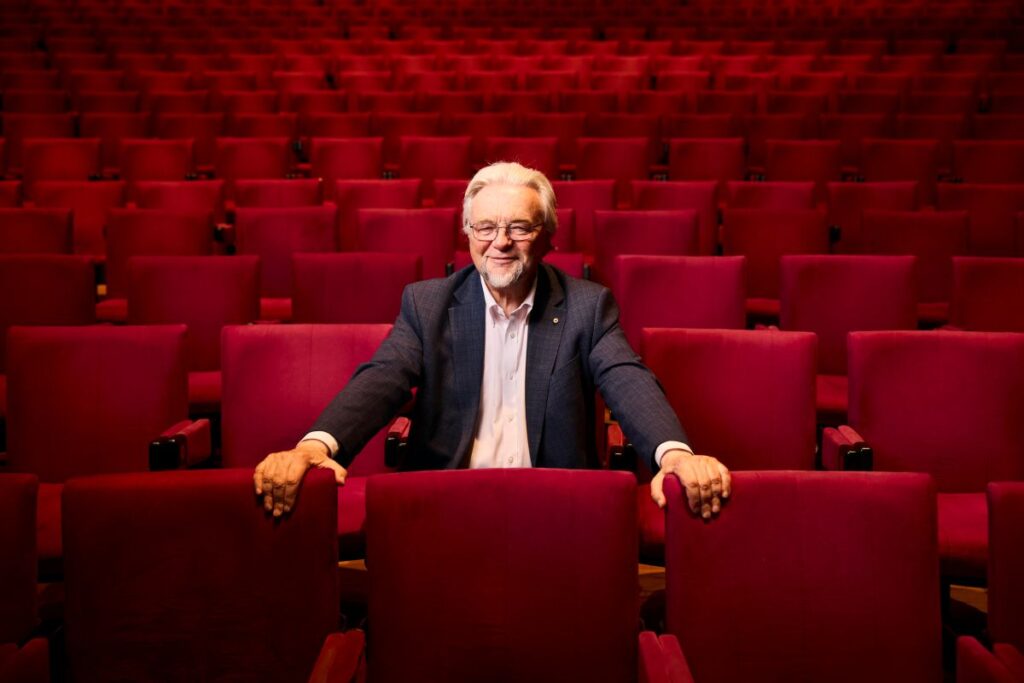
After years of involvement with Adelaide Festival Centre, what moment or achievement stands out as particularly meaningful to you?
I appeared in the opening of Festival Theatre back in 1973, and it was the second act of Beethoven’s only opera, Fidelio, and that was great, I loved it. Now some of the most precious events we present are things like the Moon Lantern Trail, where families from right across the community feel that they are part of what we do and that they have recognition.
The way we connect with over 600 schools here, that is amazing and a huge investment in the future. I know when we’re asked to be an advisor for international arts marts or expos, on arts precincts or arts facilities, then I know there is a mark of respect for what Adelaide Festival Centre is and what it does.
If you could describe the legacy you hope to leave for the Centre and its festivals in one sentence, what would it be?
This is a great team right across the board, a creative team, and I hope it continues to be relevant to its community, and that it continues to hold the respect of the arts sector across Asia Pacific.
You’ve overseen the introduction and growth of major festivals such as OzAsia, DreamBIG, and First Nations programming. How do these festivals reflect the evolving identity of Adelaide’s arts community?
I think they represent the evolution of the community as a whole. We’re all interested in our children’s welfare and broadening their experience and knowledge. The arts involvement is just so beneficial to children’s development and experience of the world, but those needs of children and young people are ever evolving, so you have to keep pace with it.
The sorts of things that might have been done even 20 years ago perhaps are not so relevant to kids today, and the great thing about that is that I think centrED, DreamBIG Children’s Festival, the winter and summer schools, and the guitar orchestras keep pace with the demands of young people. We should always be thinking about that.
We should never stand still. We all accept that arts and culture is a primary place, an opportunity, for reconciliation work and we as a community must take that very seriously.
It’s a privilege to be able to work with First Nations curators here and we try and make sure that all our festivals have some First Nations content.
We have a special opportunity in terms of being a platform for many voices in our community so that these voices feel that they are heard, that they have access and their stories are being told. That is a great contribution to good civic society, and I think Adelaide Festival Centre is right in the middle of all that.
OzAsia Festival has become a hub for Asian-Australian cultural engagement. How does the Festival strengthen cultural ties and mutual understanding between Australia and our Asian neighbours?
Our audiences see a lot of Asian work that comes to us, and equally, some of our best artists collaborate with companies from across Asia Pacific and bring that collaborative work here. Then there are the Asian Australian writers. The insights about their backgrounds and relationship to modern day Australia.
This all comes together during OzAsia, so it gives everybody an opportunity to hear from others in this Asia Pacific community, of which we are part, so I can’t think of another festival or event across the country that really does that.
First Nations Programming including OUR MOB is such a significant addition to the festival lineup. How does it contribute to amplifying Indigenous voices and stories?
OUR MOB started off as a visual arts exercise almost 17 years ago. It’s an event of great joy and celebration – everyone loves it, people buy great art and the artists appreciate it. We’ve tried to push out with OUR WORDS and OUR STORIES, and I think that has been a great exercise. Celia Coulthard, our First Nations curator, and the team have done an outstanding job.
What role do you see festivals like DreamBIG Children’s Festival, Adelaide Guitar Festival and Adelaide Cabaret Festival playing in shaping future generations of artists and audiences?
There is a lot of value in Adelaide being regarded as the best festival city in the country, and it is, but it cannot just be mad March because if you take a look at other models and Edinburgh is a good example, these are festival cities “all year round.” So that’s what this suite of festivals is planned to do, because from March onward, we’re running festivals year-round. Admittedly, they’re thematic.
But as I said before, I think each of them is predicated pretty strongly on a recognition and a desire for relevance, and attraction to a modern Australian community mix and diversity. Each of them has a component in terms of attracting young artists and encouraging their work and I do think that we’re growing audiences with that. If you look at the age of the audience for festivals, I think generally we can see that young people are participating and they are shaping the taste, and they are instructing us, after all, we’re nothing without audiences.
You can see with OzAsia for instance, 220,000 people, people vote with their feet. So you know that there is appetite for it. But we can never, ever take it for granted, and we can never stop evolving and thinking, okay, so what is relevant to our audience and what do they want?
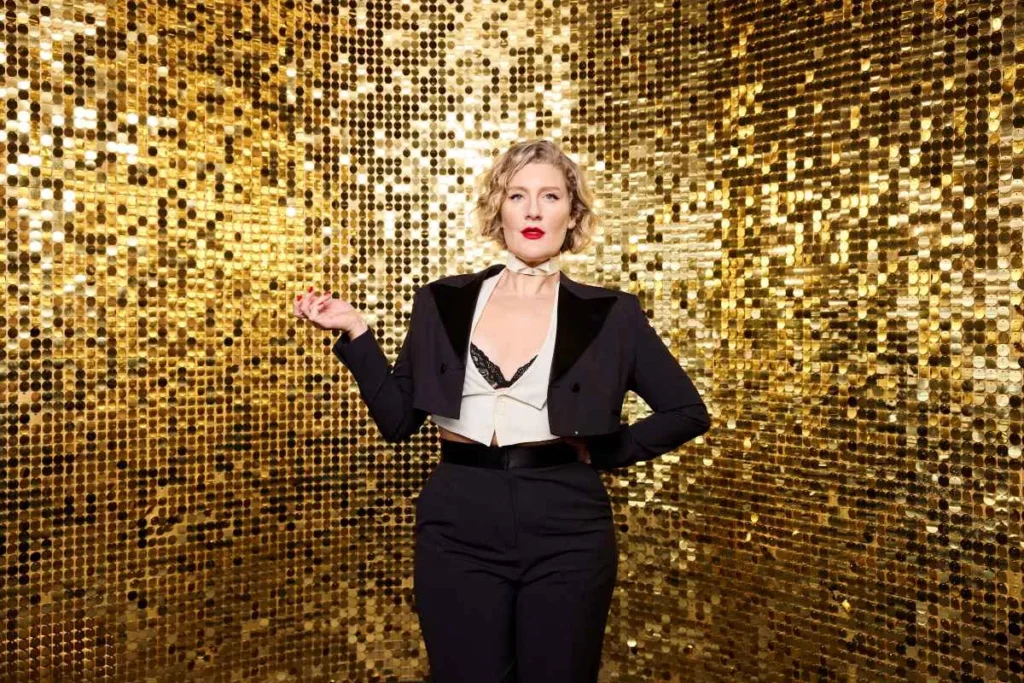
Adelaide Festival Centre has a remarkable ability to host both large-scale productions and community-focused festivals. How do these events complement each other in shaping the Centre’s legacy?
We always need to have a balance. A centre like this which is owned by the public, should be presenting a very wide range of attractions. We’re very pleased to be able to present the Disney shows and the commercial producers shows which could attract anything up to about 150,000 attendees. So they’re
important commercially to the operations of the centre. But equally, we have responsibilities, to do work that is not for profit with independent artists from South Australia, which through our ‘inSpace’ series, we work very hard to support. It has to be a balance.
Right across the board, it is the festivals, the community work, the free work, the exhibitions, and the work we do with home companies. We also present a comprehensive mix of commercial work alongside the big musicals. So, it’s a balance, and, always trying to think about what the audience wants and what else we can get them to explore.
Under your leadership, Adelaide became a UNESCO City of Music. Why was this recognition so important, and how has it benefited the city?
The UNESCO Creative Cities Network is a very strong international network. It’s not easy to win the designation, the city has to show that it recognises that arts and culture and respect for cultural diversity is central to the city’s planning and activity.
In the case of Adelaide, there is no question, if you look musically over the years, the track record is really quite remarkable.
At one stage, in Asia Pacific, there was only one creative city for music, which was Hamamatsu, the city in Japan that makes keyboards like Yamaha and Roland. UNESCO wanted some more cities of music and that year there were about 12 that applied and only three were successful. One was Tongyeong in Korea, which is a centre for traditional pansori opera, Korean opera, and also a very strong centre for Western classical music. Varanasi in India, which is a centre for Indian classical music and Adelaide.
So why did we want to be connected? Well, it’s a network that enables artist to artist and/or creative organisation to creative organisation cooperation and not just in the specific field of music. There are seven creative genre designations. We’ve had cooperations with Singapore in design and music, and Sydney in screen and music. We have set up under the auspices of UNESCO many bilateral cooperatives for Adelaide musicians, particularly across Asia Pacific.
In 2019, we convened at Adelaide Festival Centre the first meeting of Asia Pacific creative cities – they’d never met before. And of course, as per the last UNESCO study, Asia Pacific is the biggest creative industries region in the world in terms of output, investment, jobs, etc. So we’re very lucky to be a part of it.
UNESCO status stamps Adelaide as worthy of being in that creative network, and there are some heavy hitters, Shanghai design, Busan film. So it’s one that we can leverage and within Asia Pacific particularly, the other creative cities respect Adelaide as a key leader.
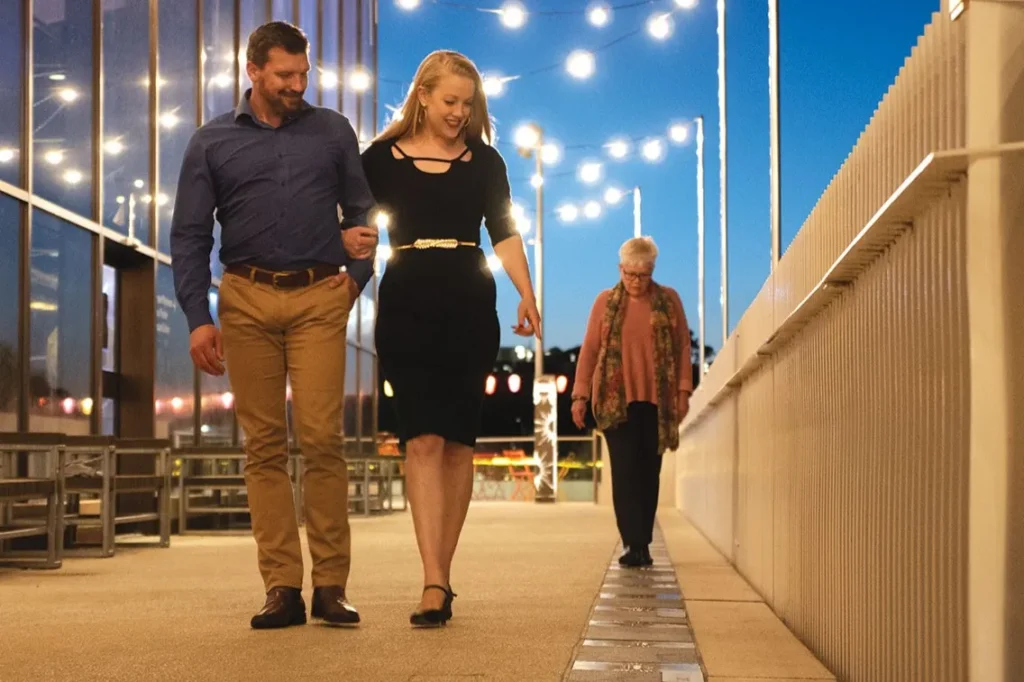
The redevelopment of Adelaide Festival Centre next year marks a new chapter. What are your hopes for the Centre as it enters this next phase?
Well, it’s a massive reinvestment in the complex. We celebrated our 50 years in 2023, but the place is 50 years old and it requires some love and upgrades. So we welcome the investment from the government in terms of fire compliance and the work on the Western Plaza, and we’re adding in to that with our own investment into new seats, new stages, back and front of house facilities. These are really aimed at a better experience for patrons and for people backstage.
I think the Western Plaza work will connect the plaza more strongly with the riverbank, back into Elder Park. Particularly if we look at something like OzAsia and Lucky Dumpling Market, access up to the plaza is important to grow those people traffic flows. If there are activities on the plaza that can connect with what’s going on down in Elder Park or riverbank this adds to the attracting power of the precinct.
The other thing is that the plaza is without doubt the gateway to the precinct. So for us, we’ve got to think about how we are opening up onto that plaza so that we are welcoming, and we capitalise on that increased foot traffic and people in that space. The potential for Adelaide Festival Centre really as an anchor attraction in the midst of all of these new buildings, Flinders University that’s bringing through 5000 people a day, hotels, casino, convention centre, the best natural amphitheatre in the city (Elder Park) and sports across the way. Click all that together – it’s very compelling.
With an international searchvunderway for your successor, what qualities or vision do you believe are essential for leading the Centre into the future?
You’ve got to love this organisation and what it stands for, and really relish the privilege of leading one of the best creative organisations in the Asia Pacific region.

